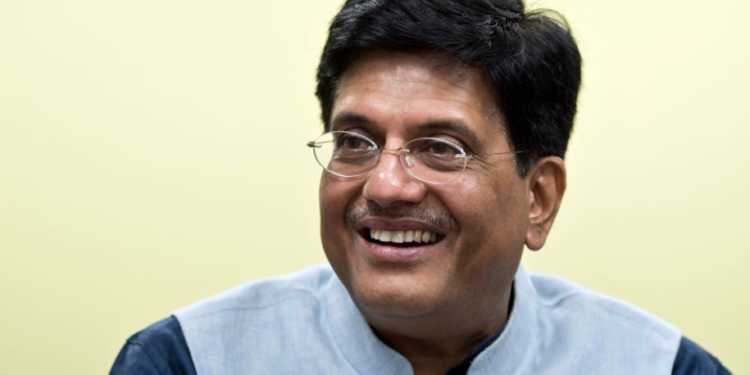Piyush Goyal took over the Railway Ministry barely 10 months ago and he has already prepared a brilliant blueprint for making the Indian Railways profitable. He has set a target of doubling revenue of Indian railways to 4 lakh crore by 2025 and an investment target of 9 lakh crore by then. In an interview, Piyush Goyal said, “Our target is to turn the railways profitable so that it doesn’t have to take any gross budgetary support from the government.” The railway ministry is focusing on electrification of railways, 55 percent of which still operates on fossil fuels. The electrification drive will make railway operations cheaper as well as environmentally sustainable. Speaking on fiscal efficiency through electrification, Piyush Goyal said “Reducing cost is the most important thing. If we were to electrify large parts of our network, we can easily save around Rs 15,000 crore in fuel bill itself.” Electrification has been completed on major routes which will help to replace diesel engines with electric ones.
Freight transportation, which is the main source of profit for the railways, will also get a boost under his regime. The Railways Ministry loses money on passenger operations while the golden quadrilateral freight corridor is a piggy bank for it. The Railway Minister said “just by introducing modern signaling on the golden quadrilateral route, we can increase the line capacity by 50%. These lines currently carry 58% of freight, imagine the kind of revenue we can get by just investing Rs 12,000 crore in signaling, which will allow us to run more trains in shorter blocks.”
Speaking on the opposition to the introduction of bullet trains in India, the Railway Minister said even Rajdhani Trains (series of very fast passenger train services in India operated by Indian Railways connecting the national capital New Delhi with the capital and/or largest cities of various states) were criticised by various people, but they turned out to be one of the most successful projects of the Indian Railways. According to him, the Bullet Train project will spur the economic growth of India and that the“Government is also looking at launching four-five more such projects between metro cities.”
The government is committed to relaxing the conditions to make it lucrative for private players to invest in station developments. 68 new stations will be completed before March 2019 and Indian Railways Station Development Corporation will lease out the stations and the adjoining land separately to get a better valuation of the land.
The government will also try to improve the operating ratio (the amount of money railways spends to earn every Rs 100) to 92 percent which is 98 percent as of now. The operating ratio has deteriorated due to the roll out of the seventh pay commission by the government. The revenues of railways will be improved by increasing its share of freight from 33% to 45%. The revenue target for this fiscal year is 2 lakh crore while the target of 4 lakh crore is set out for 2025. On the concrete plans to increase the revenue, Goyal said “As we add more capacity, our freight rates will also come down, which will increase volumes, the speed of trains is also being increased, which will allow us to run more trains. All of it will help us earn more money. The average speed of passenger trains is also being increased by 25%.”
The safety and punctuality of railways are also expected to improve. The number of accidents has already come down to a double-digit from the three digit numbers in the previous year, and the reporting for punctuality is now more accurate. The Railway Ministry has always been one of the most important ministries due to the sheer scale on which it operates and the huge revenue it generates. Having a man as innovative and brilliant as Piyush Goyal will help the railway to become a profitable business. The Indian Railways is the lifeline of India. In a country that is so vast and diverse, railway unites us by making it easier for us to travel through the length and breadth of the country. The India Railway manages the fourth largest network in the world, carrying 8.26 billion passengers and transports 1.16 billion tons of freight yearly as of the fiscal year 2018.





























